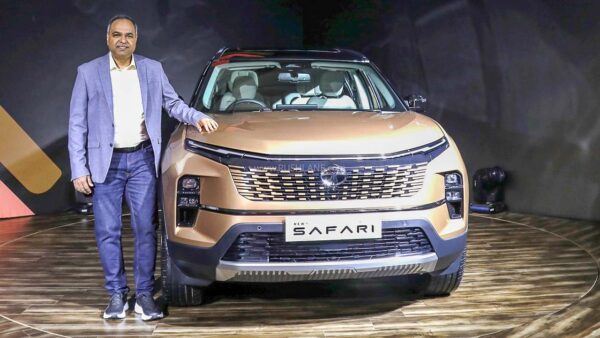
With their lower starting price, petrol variants of Harrier and Safari can target a larger customer base
Tata Motors has introduced a comprehensive range of updates for Harrier and Safari facelifts. Safety aspects are now verifiable with Harrier and Safari getting 5-star rating in Global NCAP crash tests. Another major announcement made by the company is that Harrier and Safari will be getting a turbo petrol motor next year.
Harrier / Safari to get 1.5-litre turbo petrol motor
Tata had showcased the new 1.5-litre TGDi 4-cylinder turbo petrol motor earlier this year at Auto Expo 2023. It churns out 170 PS of max power and 280 Nm of peak torque. It is expected to be offered with transmission choices of 6-speed manual and a DCT gearbox. With Tata’s official confirmation, all speculations about the new petrol engine have been put to rest.

A petrol option for Harrier and Safari offers multiple benefits. It is likely to lower the starting price of the SUVs. It will make Harrier and Safari accessible to a larger customer base. As of now, Harrier is available at a starting price of Rs 15.49 lakh. Automatic variants start at Rs 19.99 lakh. Sunroof variants start at Rs 18.69 lakh, whereas ADAS variants start at Rs 21.69 lakh.
Safari starting price is Rs 16.19 lakh for manual and Rs 20.69 lakh for automatic variants. Sunroof and ADAS options start with variants costing Rs 19.39 lakh and Rs 22.49 lakh, respectively. Petrol variants of Harrier and Safari could be around Rs 1 lakh cheaper, relative to their diesel counterparts.

Improved positioning against rivals
There have been claims that Harrier and Safari could have achieved higher sales if petrol option was available. The rationale is that most other bestselling mid-size SUVs such as Scorpio N, XUV700, MG Hector and Hyundai Alcazar have both diesel and petrol engine options. When Harrier and Safari get petrol variants, it will be interesting to see the kind of impact they have on sales. The percentage contribution of petrol variants will provide a clear idea about consumer preferences.
Having a petrol variant will also protect Harrier and Safari from stricter emission norms that can be mandated in the future. Achieving compliance with a petrol engine is relatively easier and cheaper in comparison to diesel engines. So, if prices of diesel variants rise on account of stricter compliance rules, the petrol variants can emerge as a saviour. Electric versions of Harrier and Safari are also under development. But these can take longer to gain wide acceptability.
As long as feasible, Harrier and Safari will continue with the 2.0-litre diesel engine. It generates 170 PS and 350 Nm. It is mated to either a 6-speed manual or 6-speed automatic gearbox. New Harrier and Safari are expected to register strong sales in the coming months. Their best-ever Global NCAP score for a Made in India car is likely to be a major draw for consumers.

